Remember that time you found a $20 bill in the pocket of your old jeans? Now, imagine experiencing that kind of unexpected delight, but instead offi ...
You might consider targeting a niche, such as auto parts or small electronics.
We earn commissions if you shop through the links below. Read more
Written by: Carolyn Young
Carolyn Young is a business writer who focuses on entrepreneurial concepts and the business formation. She has over 25 years of experience in business roles, and has authored several entrepreneurship textbooks.
Edited by: David Lepeska
David has been writing and learning about business, finance and globalization for a quarter-century, starting with a small New York consulting firm in the 1990s.
Published on April 13, 2023
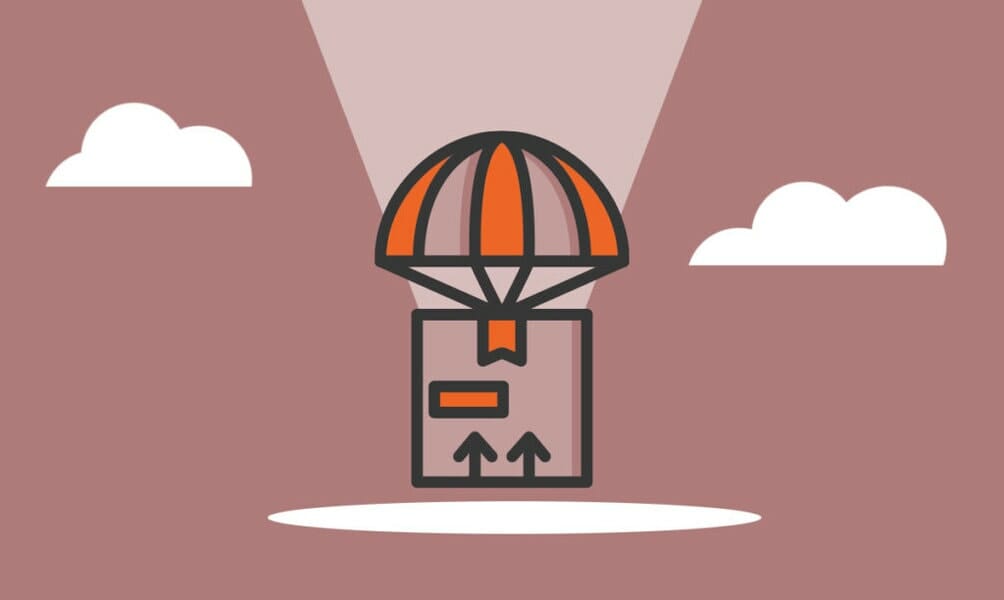
Investment range
$2,000 - $6,800
Revenue potential
$150,000 - $500,000 p.a.
Time to build
3-6 months
Profit potential
$30,000 - $100,000 p.a.
Industry trend
Growing
Commitment
Flexible
Here are the most important factors to consider when you want to start a dropshipping business:
You May Also Wonder:
Is a dropshipping business profitable?
A dropshipping business has low profit margins, so you have to do a large volume of sales to make a significant profit. You’ll need to do a lot of marketing to get to that point.
What is the growth potential of a dropshipping business?
There’s really no limit to how large a dropshipping business can grow. It just takes a significant amount of marketing to get traffic to your online store.
What type of business is a dropshipping business?
Dropshipping is a type of e-commerce. It’s just different than other e-commerce businesses in that you don’t have to purchase inventory.
Can you start a dropshipping business on the side?
When you have a dropshipping business, your main job is marketing, so it makes a great side hustle. You can run it on the weekends and in your other free time.
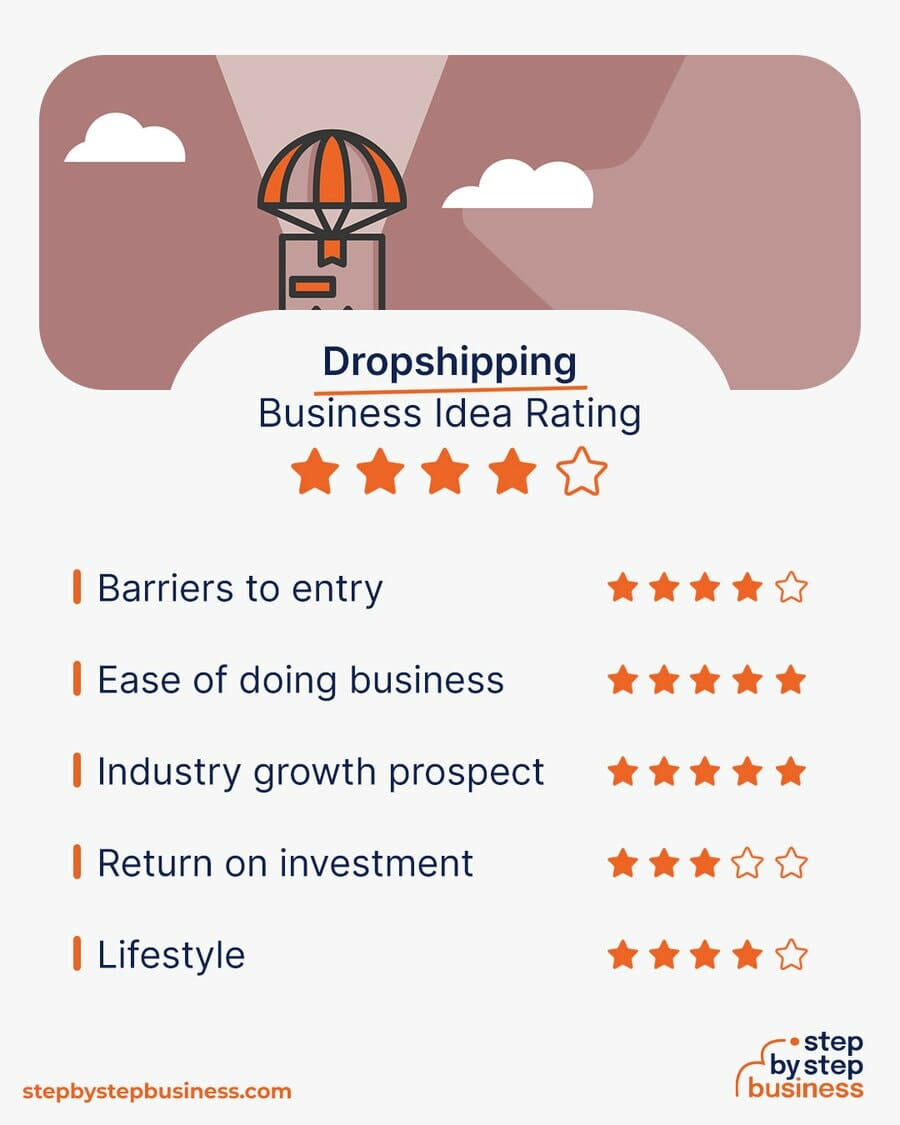

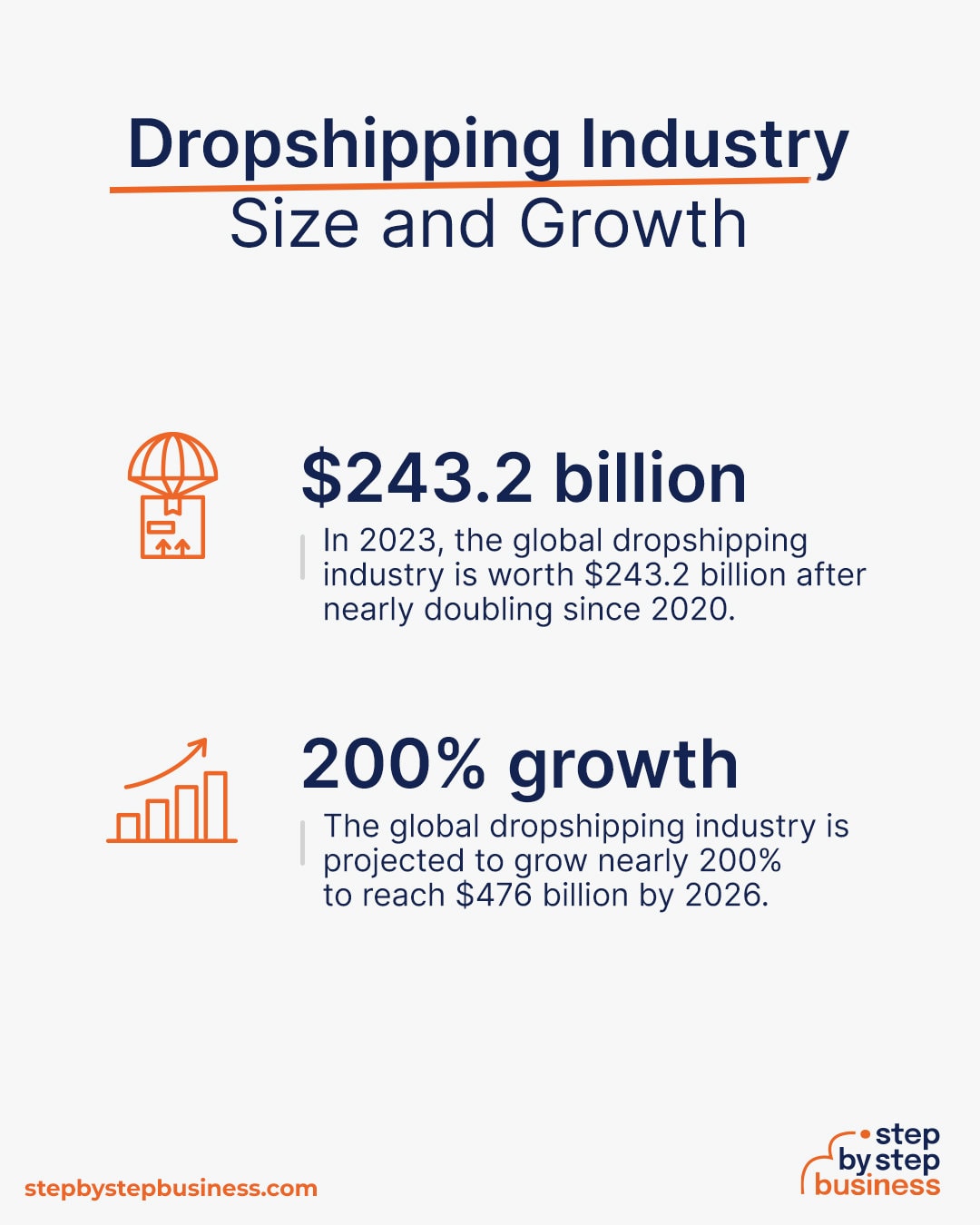
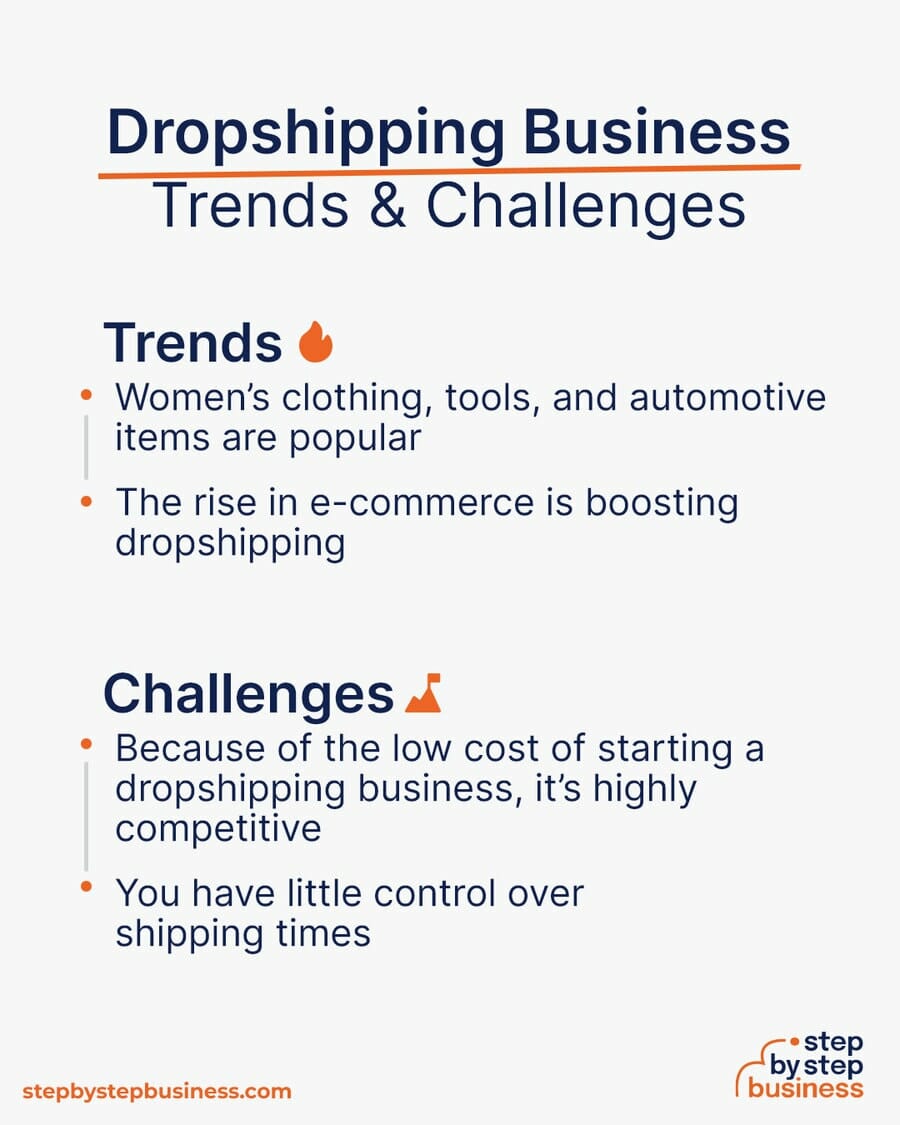
Trends
Challenges
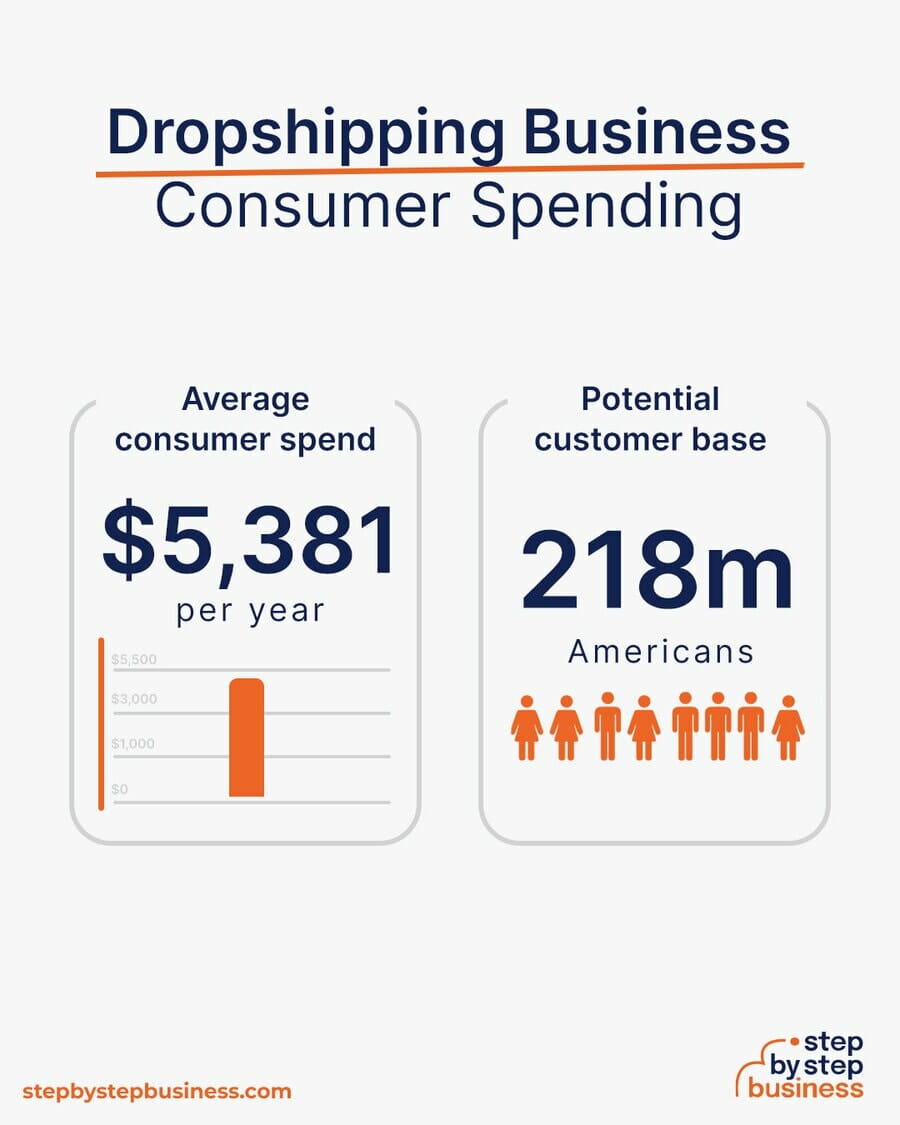
Startup costs for a dropshipping business range from $2,000 to $7,000. The main costs are a computer, a website, and a marketing budget.
You’ll need a handful of items to successfully launch your dropshipping business, including:
| Start-up Costs | Ballpark Range | Average |
|---|---|---|
| Setting up a business name and corporation | $100 - $500 | $300 |
| Business licenses and permits | $100 - $300 | $200 |
| Insurance | $100-$500 | $300 |
| Website | $200 - $1,000 | $600 |
| Initial Marketing Budget | $1,000 - $3,000 | $2,000 |
| Computer | $500 - $1,500 | $1,000 |
| Total | $2,000 - $6,800 | $4,400 |
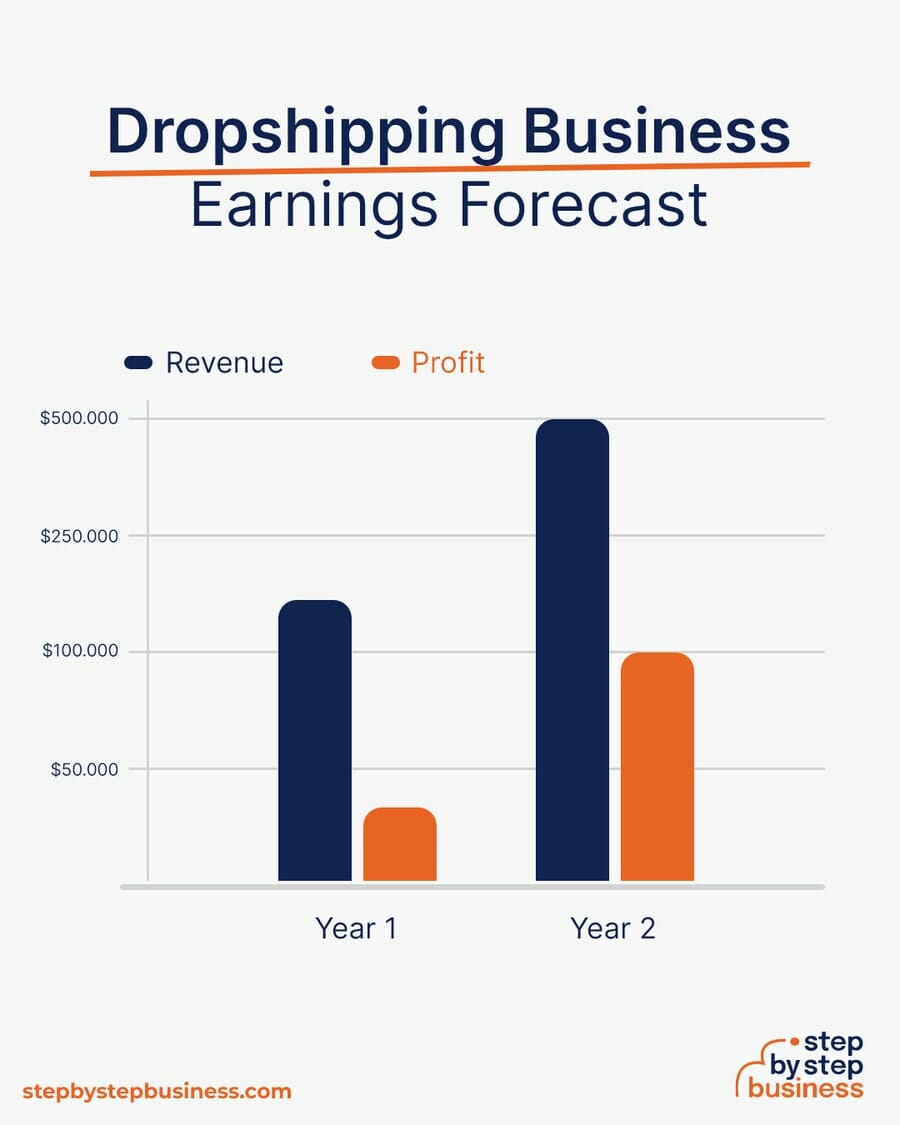
The downside of dropshipping is that profit margins are low since most of the product price goes to the manufucturer. You should aim for a profit margin of about 20%. These calculations will assume an average product price of $50.
In your first year or two, you might sell 3,000 items online in a year, bringing in $150,000 in revenue. This would mean $30,000 in profit, assuming that 20% margin.
As you gain traction, sales could climb to 10,000 items a year. With annual revenue of $500,000, you’d make a tidy profit of $100,000.
There are a few barriers to entry for a dropshipping business. Your biggest challenges will be:

Now that you know what’s involved in starting a dropshipping business, it’s a good idea to hone your concept in preparation to enter a competitive market.
You should to choose a niche you’re passionate or knowledgeable about. This ensures genuine interest and a deeper understanding of your products.
Moreover, you’ll need to find a profitable product opportunity. You’ll want a product that’s in high demand, but with less competition. Check Google trends to find popular goods, then search for businesses that offer those products. A harder-to-find product may be your best bet.
Amazon, being one of the largest and most popular online marketplaces in the world, offers invaluable insights into consumer buying behaviors and trends. If a product is trending in Amazon’s best-sellers list, it may indicate that there’s a significant demand for it.
You might consider targeting a niche, such as auto parts or small electronics.
Once you’ve identified several promising niches for your dropshipping venture, it’s important to dive deeper into market research for each potential niche.
By delving into market analysis, you’ll uncover vital insights about future growth prospects, potential opportunities, and looming threats. With a clearer picture of the industry, you can more accurately forecast potential revenues, which in turn, simplifies the task of crafting effective marketing strategies right from the outset.
Here are some key aspects to explore during your research:
1. Industry Value and Market Size: Determine the current value of the niche and its projected growth. It’s essential to gauge the niche’s size, understand prevailing trends, and anticipate its growth trajectory.
2. Target Audience Analysis: Deep dive into the typical customer profile within your chosen niche. Factors like age, gender, income bracket, hobbies, and occupation can offer invaluable insights.
3. Customer Buying Behavior: Comprehend the motivations behind purchasing decisions and the frequency with which purchases are made. By understanding these behaviors, you can craft more targeted marketing campaigns and set prices that resonate with your customer base.
4. Competitor Analysis: Identify the major players within your chosen niche. Dissect their operations to understand their strengths and pinpoint any weaknesses or areas they may have overlooked. This can help you carve out a unique value proposition and possibly identify untapped market segments or needs.
The right supplier can be pivotal to the success of your dropshipping business. Not only do they provide the products, but they’re also responsible for ensuring they reach your customers in good condition and in a timely manner.
Here are our tips to get you started.
1. Finding Suppliers: Several platforms, such as Doba, SaleHoo, AliDropship, Spocket and Worldwide Brands, act as hubs where you can find various suppliers. For businesses interested in customized, print-on-demand products, Printful and Printify are noteworthy options.
2. Quality Assurance: The quality of products you offer reflects directly on your brand. Decide on the standard you want your company to uphold. Whether you position yourself as a premium provider or a discount supplier, ensure the product quality aligns with your brand image. Conducting sample orders helps gauge the quality of both the product and its packaging.
3. Supplier Reliability: Timely product delivery is a core aspect of customer satisfaction. Many suppliers operate from overseas, which could mean prolonged shipping times. Ensure that the supplier has a good track record of delivering products promptly. Also, verify they maintain adequate stock levels to avoid disappointing customers with unavailable products. A practical way to assess reliability is by placing test orders and observing the fulfillment process.
4. Legality and Reputation: It’s crucial to verify the legitimacy of a supplier. Ask for their business license and delve into their client list. Online reviews can provide insights into their service quality and reliability.
5. Order Requirements: Some suppliers might require a minimum order quantity which demands an upfront payment. While buying in bulk often results in cheaper costs, it’s crucial for dropshippers, especially those just starting, to be aware of these requirements.
6. Customer Service: A responsive supplier is crucial. They should be readily available to address any concerns or issues. This is especially important if customers raise complaints or need assistance.
7. Return Policy: Understanding a supplier’s return policy is essential, as this will inform your own returns policy. While many suppliers might not offer returns, it’s advantageous to partner with those that do, as this can enhance customer trust and satisfaction.
8. Direct Source Suppliers: If you have a specific product in mind, seeking a direct source supplier might be beneficial. This approach might demand more groundwork, as you’d need to identify the product’s distributor for the manufacturer. Some might also have sales targets to be met for eligibility.
It’s essential to ensure a decent profit margin after factoring in all costs. Most dropshippers aim for a profit margin between 15% to 20%. However, to determine this accurately, account for the wholesale price, shipping, transaction costs, and any other associated fees like monthly subscriptions, packaging, refund, and platform-specific costs. Ideally, after all these deductions, a benchmark of 20-40% or above is desirable.
Once you know your costs, use our profit margin calculator to determine your mark-up and final price points.

Here are some ideas for brainstorming your business name:
Once you’ve got a list of potential names, visit the website of the US Patent and Trademark Office to make sure they are available for registration.
Finally, make your choice among the names that pass this screening and go ahead and reserve your business name with your state, start the trademark registration process, and complete your domain registration and social media account creation.
Your business name is one of the key differentiators that sets your business apart. Once you pick a name, reserve it and start with the branding, it’s hard to switch to a new name. So, be sure to carefully consider your choice before moving forward.
Setting up an online store is a pivotal step in establishing a dropshipping business. Not only does it serve as your primary sales channel, but it’s also the digital face of your brand.
While there are various platforms where you can sell products, such as Etsy, Amazon, or even social media platforms like Facebook and Instagram, owning your website offers more control over branding, design, and transactions. Moreover, operating your own e-commerce store means avoiding platform fees, which can significantly boost your profit margins.
To build an online store you will need:
Domain Name: Typically, businesses opt for a ‘.com’ extension, as it’s widely recognized. Check the availability of desired domain names using our Domain Name Search tool below.
Web hosting: Your hosting provider will store your website’s files and ensure it’s accessible online. Some of the best hosting services for a dropshipping business are Shopify Hosting, Hostinger, and SiteGround.
Content Management System (CMS): Platforms such as WordPress, Shopify, and Wix can help you set up and manage your online store without needing extensive technical know-how.
Dropshipper Integrations: Ensure seamless communication between your website and your dropshipping suppliers. Some dropshipping platforms, like AliDropship, have plugins that allow seamless product imports to your website. This feature can be a significant time-saver and streamline operations.
Payment Gateway: Allows you to accept online payments securely. Some popular payment gateways include Amazon pay, Skrill, Stripe, PayPal, and 2Checkout.
Automated Dropshipping: It’s vital to automate the link between product sales and order placements with suppliers. Automation minimizes manual intervention, reduces errors, and ensures faster order processing.
Registering your business is an absolutely crucial step — it’s the prerequisite to paying taxes, raising capital, opening a bank account, and other guideposts on the road to getting a business up and running.
Plus, registration is exciting because it makes the entire process official. Once it’s complete, you’ll have your own business!
Your business location is important because it can affect taxes, legal requirements, and revenue. Most people will register their business in the state where they live, but if you are planning to expand, you might consider looking elsewhere, as some states could offer real advantages when it comes to dropshipping businesses.
If you’re willing to move, you could really maximize your business! Keep in mind, it’s relatively easy to transfer your business to another state.
Business entities come in several varieties, each with its pros and cons. The legal structure you choose for your dropshipping business will shape your taxes, personal liability, and business registration requirements, so choose wisely.
Here are the main options:

We recommend that new business owners choose LLC as it offers liability protection and pass-through taxation while being simpler to form than a corporation. You can form an LLC in as little as five minutes using an online LLC formation service. They will check that your business name is available before filing, submit your articles of organization, and answer any questions you might have.
Choose Your State
The final step before you’re able to pay taxes is getting an Employer Identification Number, or EIN. You can file for your EIN online or by mail or fax: visit the IRS website to learn more. Keep in mind, if you’ve chosen to be a sole proprietorship you can simply use your social security number as your EIN.
Once you have your EIN, you’ll need to choose your tax year. Financially speaking, your business will operate in a calendar year (January–December) or a fiscal year, a 12-month period that can start in any month. This will determine your tax cycle, while your business structure will determine which taxes you’ll pay.
The IRS website also offers a tax-payers checklist, and taxes can be filed online.
It is important to consult an accountant or other professional to help you with your taxes to ensure you are completing them correctly.
Securing financing is your next step and there are plenty of ways to raise capital:

Bank and SBA loans are probably the best option, other than friends and family, for funding a dropshipping business. You might also try crowdfunding if you have an innovative concept.

Starting a dropshipping business requires obtaining a number of licenses and permits from local, state, and federal governments.
Federal regulations, licenses, and permits associated with starting your business include doing business as (DBA), health licenses and permits from the Occupational Safety and Health Administration (OSHA), trademarks, copyrights, patents, and other intellectual properties, as well as industry-specific licenses and permits.
You may also need state-level and local county or city-based licenses and permits. The license requirements and how to obtain them vary, so check the websites of your state, city, and county governments or contact the appropriate person to learn more.
You could also check this SBA guide for your state’s requirements, but we recommend using MyCorporation’s Business License Compliance Package. They will research the exact forms you need for your business and state and provide them to ensure you’re fully compliant.
This is not a step to be taken lightly, as failing to comply with legal requirements can result in hefty penalties.
If you feel overwhelmed by this step or don’t know how to begin, it might be a good idea to hire a professional to help you check all the legal boxes.
Before you start making money, you’ll need a place to keep it, and that requires opening a bank account.
Keeping your business finances separate from your personal account makes it easy to file taxes and track your company’s income, so it’s worth doing even if you’re running your dropshipping business as a sole proprietorship. Opening a business bank account is quite simple, and similar to opening a personal one. Most major banks offer accounts tailored for businesses — just inquire at your preferred bank to learn about their rates and features.
Banks vary in terms of offerings, so it’s a good idea to examine your options and select the best plan for you. Once you choose your bank, bring in your EIN (or Social Security Number if you decide on a sole proprietorship), articles of incorporation, and other legal documents and open your new account.
Business insurance is an area that often gets overlooked yet it can be vital to your success as an entrepreneur. Insurance protects you from unexpected events that can have a devastating impact on your business.
Here are some types of insurance to consider:


As opening day nears, prepare for launch by reviewing and improving some key elements of your business.
If you’ve established a store for your dropshipping site, it’s likely that you’ve already incorporated the essential tools and software required.
You may want to use industry-specific software, such as Inventory Source, Importify, or Spark Shipping, to manage your product data, dropshipping suppliers, order routing, and shipment tracking.
Here are some powerful digital marketing strategies for dropshipping businesses:
Take advantage of your website, social media presence and real-life activities to increase awareness of your offerings and build your brand.
Traditional marketing is any form of marketing that uses offline media to reach an audience. Some options that might work for a dropshipping business include:
Ensure that product descriptions are detailed, accurate, and compelling.
Make sure that you optimize calls to action on your website. Experiment with text, color, size, and position of calls to action such as “Buy Now” or “Order”. This can sharply increase purchases.
Use tools like Google PageSpeed Insights to check your site’s speed. Consider compressing images, using a content delivery network (CDN), and optimizing your code.
A significant portion of online shopping occurs on mobile devices. Ensure that your website is mobile-responsive, offering a seamless experience to users on all devices.
Social proof is powerful in influencing buying decisions. Incorporate a product review section on your site, allowing customers to leave feedback and share their experiences.
A well-structured, intuitive navigation system can enhance user experience. Categorize products logically, implement a search function, and regularly review and adjust based on user behavior and feedback.

Unique selling propositions, or USPs, are the characteristics of a product or service that sets it apart from the competition. Customers today are inundated with buying options, so you’ll have a real advantage if they are able to quickly grasp how your products meet their needs or wishes. It’s wise to do all you can to ensure your USPs stand out on your website and in your marketing and promotional materials, stimulating buyer desire.
Global pizza chain Domino’s is renowned for its USP: “Hot pizza in 30 minutes or less, guaranteed.” Signature USPs for your dropshipping business could be:
You may not like to network or use personal connections for business gain. But your personal and professional networks likely offer considerable untapped business potential. Maybe that Facebook friend you met in college is now running a dropshipping business, or a LinkedIn contact of yours is connected to dozens of potential clients. Maybe your cousin or neighbor has been working in dropshipping for years and can offer invaluable insight and industry connections.
The possibilities are endless, so it’s a good idea to review your personal and professional networks and reach out to those with possible links to or interest in dropshipped products. You’ll probably generate new customers or find companies with which you could establish a partnership. Online businesses might also consider affiliate marketing as a way to build relationships with potential partners and boost business.

If you’re starting out small from a home office, you may not need any employees. But as your business grows, you will likely need workers to fill various roles. Potential positions for dropshipping business include:
At some point, you may need to hire all of these positions or simply a few, depending on the size and needs of your business. You might also hire multiple workers for a single role or a single worker for multiple roles, again depending on need.
Free-of-charge methods to recruit employees include posting ads on popular platforms such as LinkedIn, Facebook, or Jobs.com. You might also consider a premium recruitment option, such as advertising on Indeed, Glassdoor, or ZipRecruiter. Further, if you have the resources, you could consider hiring a recruitment agency to help you find talent.

Dropshipping is a great way to get into e-commerce, with the supplier doing most of the heavy lifting. You’ll just need to choose appealing products, find a reliable manufacturer and do some great marketing and the revenue should start flowing in.
Now that you’ve learned the business side of things, it’s time to get to it and make your dropshipping business a serious success!

Published on December 4, 2022
Remember that time you found a $20 bill in the pocket of your old jeans? Now, imagine experiencing that kind of unexpected delight, but instead offi ...
Read Now
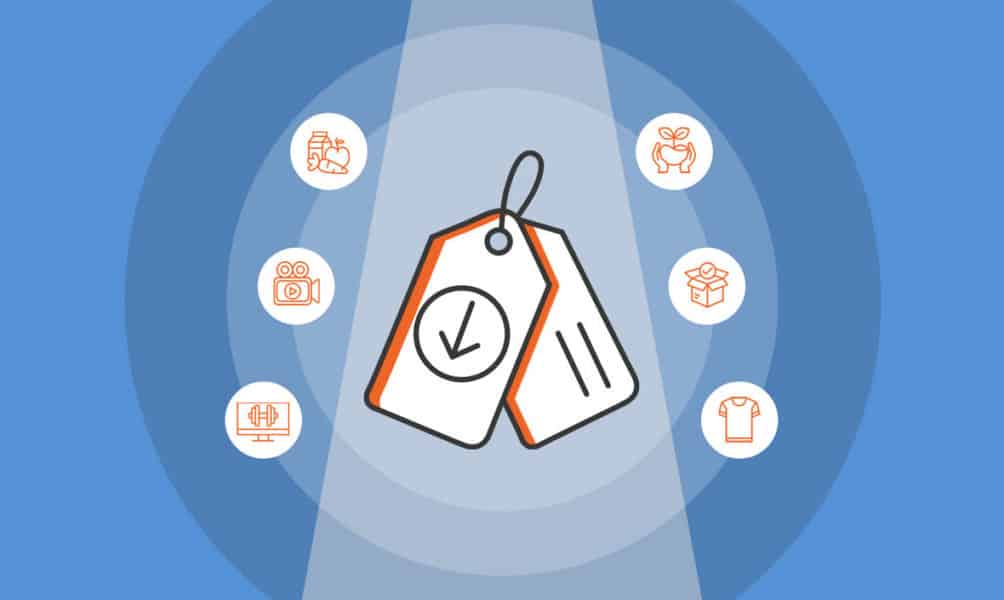
Published on August 26, 2022
Seeking low-cost, high-profit business ideas for 2024, we’ve gathered insights from CEOs and founders who have a track record of turninginnova ...
Read Now

Published on August 12, 2022
From selling on Poshmark to operating an online gambling casino, the list of online businesses is endless. The pandemic has caused manyentrepreneurs ...
Read Now
No thanks, I don't want to stay up to date on industry trends and news.
Comments